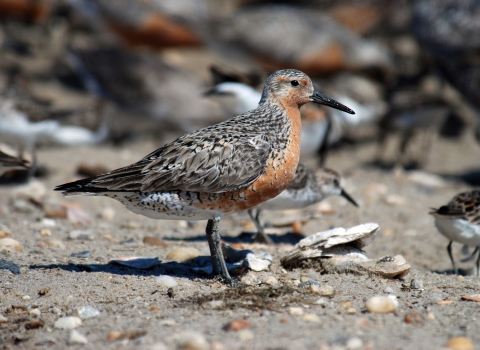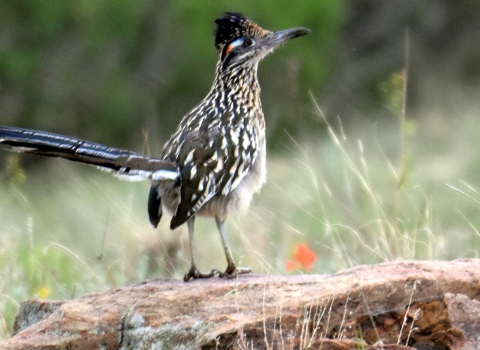A fish hatchery in Tupelo, Mississippi named after its Congressional representative who gave a speech noting that “…thousands and millions of unborn fish are clamoring…for an opportunity to be hatched at the Tupelo hatchery…” is being restored and making history. The Private John Allen National Fish Hatchery was recently recognized by U.S. Fish and Wildlife Service Director Martha Williams for the house’s restoration and as Hatchery of the Year.
“It’s amazing that the restoration of the historic residence house, started about five years ago, was accomplished by two people, and one of them is a volunteer,” says Daniel Gallegos, acting project leader of Private John Allen National Fish Hatchery.
Ronnie, Facility Operations Specialist, and Berry Snyder, a retired master carpenter volunteer, are primarily responsible for the restoration. The house, built in 1904, was completely revamped, remodeled, replumbed, and rewired. It now provides first floor space for the Lower Mississippi River Fish and Wildlife Conservation Office and an employee from the Wadmalaw Island Fish and Wildlife Conservation Office. The second floor, which is still being renovated, is a dormitory for summer interns, Service employees on work details, and university students completing research projects.
“To be honest, the house was probably getting close to seeing its final days,” says Gallegos. “However, due to the team’s hard work, dedication, and endless hours contributed to the project, the house surely has a bright future and will hopefully be standing for another 120 years, serving as a Tupelo icon.”
Added to the National Register of Historic Places in 1990, the residence has stood on the hatchery’s grounds since its beginning when it was named the Tupelo National Fish Hatchery. Until the late 1980’s, hatchery managers and their families lived there. The Tupelo Garden Club used the house for several years, and it was a popular place for receptions and weddings until around 2010. It stopped being used because of the amount of electrical and other work that needed to be done.
Private John Allen National Fish Hatchery also was honored for work accomplished by its five-person staff and two volunteers. Last year, the hatchery accomplished two historic firsts.
In 2017, the Southeast Aquatic Habitat Restoration Team removed a perched culvert, which was limiting passage in Smith Creek, and installed a bottomless aluminum culvert. This gave the Yoknapatawpha darter, once known as the Yazoo darter, access to Smith Creek where it had not been seen since the 1980’s. Since 2018, the hatchery’s staff has propagated, tagged, and reintroduced these darters into the creek. During 2021 sampling, 16 tagged individuals from two separate year-classes were collected along with 11 individuals of different sizes with no tags, documenting the first natural recruitment in Smith Creek since the 1980’s.
Likewise, Frecklebelly madtoms are swimming in Bull Mountain Creek for the first time in 40 years. The madtom was historically known from that creek, but the completion of the Tennessee-Tombigbee waterway blocked the fish’s passage to the main stem of the Tombigbee River and into its Bull Mountain Creek tributary. Hatchery staff members, along with the Service’s Mississippi Ecological Services Field Office, Mississippi Department of Wildlife, Fisheries, and Parks, the Lower Mississippi River Fish and Wildlife Conservation Office, Wadmalaw Island Fish and Wildlife Conservation Office, and Baton Rouge Conservation Office, created a madtom propagation and restoration plan. In November 2021, a total of 400 madtoms were collected from the East Tombigbee River and reintroduced into Bull Mountain Creek.
Later this year, the hatchery’s staff and their partners will return to Bull Mountain Creek. Hopefully, the reintroduced madtoms will survive and spawn offspring. If so, it’ll mark yet another historic first for Private John Allen National Fish Hatchery. With house restoration nearly complete, and history in the making, the hatchery continues to live up to Representative Allen’s “hatchery speech.”



